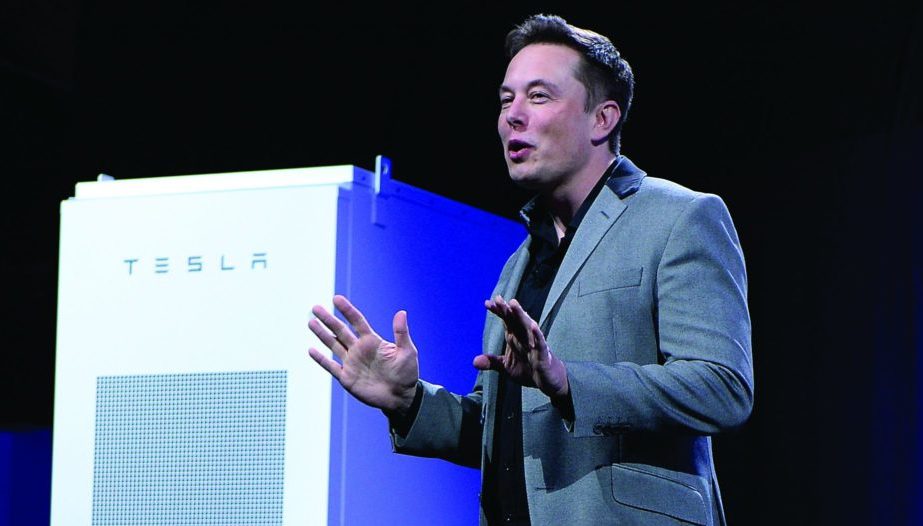
Elon Musk, CEO of Tesla, with a Powerpack unit the background unveils suit of batteries for homes, businesses, and utilities at Tesla Design Studio April 30, 2015 in Hawthorne, California. (Photo by Kevork Djansezian/Getty Images)
On May 31 Tesla CEO Elon Musk made a statement that he was getting serious about factory safety. The statement sounded like a heartfelt appeal for everyone to improve safety at the state-of-the-art Tesla automobile factory in Fremont, California. Unfortunately, the statement was issued after it was made public that Tesla’s safety rates from 2014 to 2016 were poor.
Worksafe conducted a review based on federal OSHA reports required to be submitted by the Fremont Tesla factory from 2014 to 2016. Worksafe concluded that the rate of reportable injuries was 31% higher than industry standards. Worksafe’s report was issued 24 May, one week before the CEO’s statement.
Although some manufacturers voluntarily release this safety information, Tesla had not done so for the 2014-2016 period. Now, Tesla has voluntarily released data for the first quarter of 2017, showing an improvement in the safety record that is now better than industry average.
Tesla’s factory is the only major automobile manufacturing facility not unionized. The United Auto Workers prominently displayed Worksafe’s report on their website. The UAW are using the safety record as part of their campaign to encourage Tesla workers to unionize. The argument is that union factories are safer because union workers can speak up about safety violations without fear of losing their jobs.
Loading...
There maybe something to that. The New York Times reported January 16, 2017, that there were 31 construction deaths in the city over the past two years. 29 deaths occurred at non-unionized construction sites, while only two occurred at unionized construction sites. The report cited the ability of union workers to speak up as a key differentiator.
Musk has big ambitions for Tesla, which is putting factory workers under considerable stress. Tesla delivered 80,000 cars in 2016 would like to deliver 500,000 cars in 2018. Working conditions in the plant have been described as very difficult. It has been reported that ambulances showed up over 100 times in the past three years because of injuries or workers simply passing out on the job.
But no statement was made about safety then, and only now, a week after the record goes public, does the CEO get serious. If Musk were truly interested in safety, he would not need to be provoked by the safety record going public.
In his statement, Musk says he requires a report on every injury. CEO’s receiving reports of on-the-job injuries is standard practice, not a significant commitment above and beyond. The statement also says he will visit each injured worker and perform the same task as the worker, presumably to understand in detail the nature of the work. This is a good practice but should not need to be done by the CEO. By proposing to do so, he is implying that only he can truly understand what is happening.
Safety is a complicated thing, resulting from cultural and organizational design decisions to create a safe working place. It does not get solved in any enduring way with slogans. It starts with the fundamental design of the factory and a culture where workers can speak up.
One way for managers to understand deteriorating conditions before an injury is to ask, at the end of the shift, a one question survey: ‘How safe was it today?’ It’s better to ask ‘How safe was it today’ than ‘Was today a safe day or not?’ This is because as workers begin to fatigue or sense priorities shifting to production over safety, it’s easier to change from a vote of 5/5 to 4/5 than to meet the threshold that would require someone to shift from ‘it is safe’ to ‘it is not safe.’
Sadly, highway deaths have trended up recently, surpassing 40,000 deaths in 2016. In Florida, where I live, angry, elderly, and inattentive drivers have pushed the rate 40% above the national average. A safer driving car would save lives. While a safer autopilot would save thousands of lives, it is hard to build a safe car in an unsafe factory.
Maybe we should start treating our employees as our first customers in the value creation chain.
For Forbes.com by David Marquet, CONTRIBUTOR
Loading...
